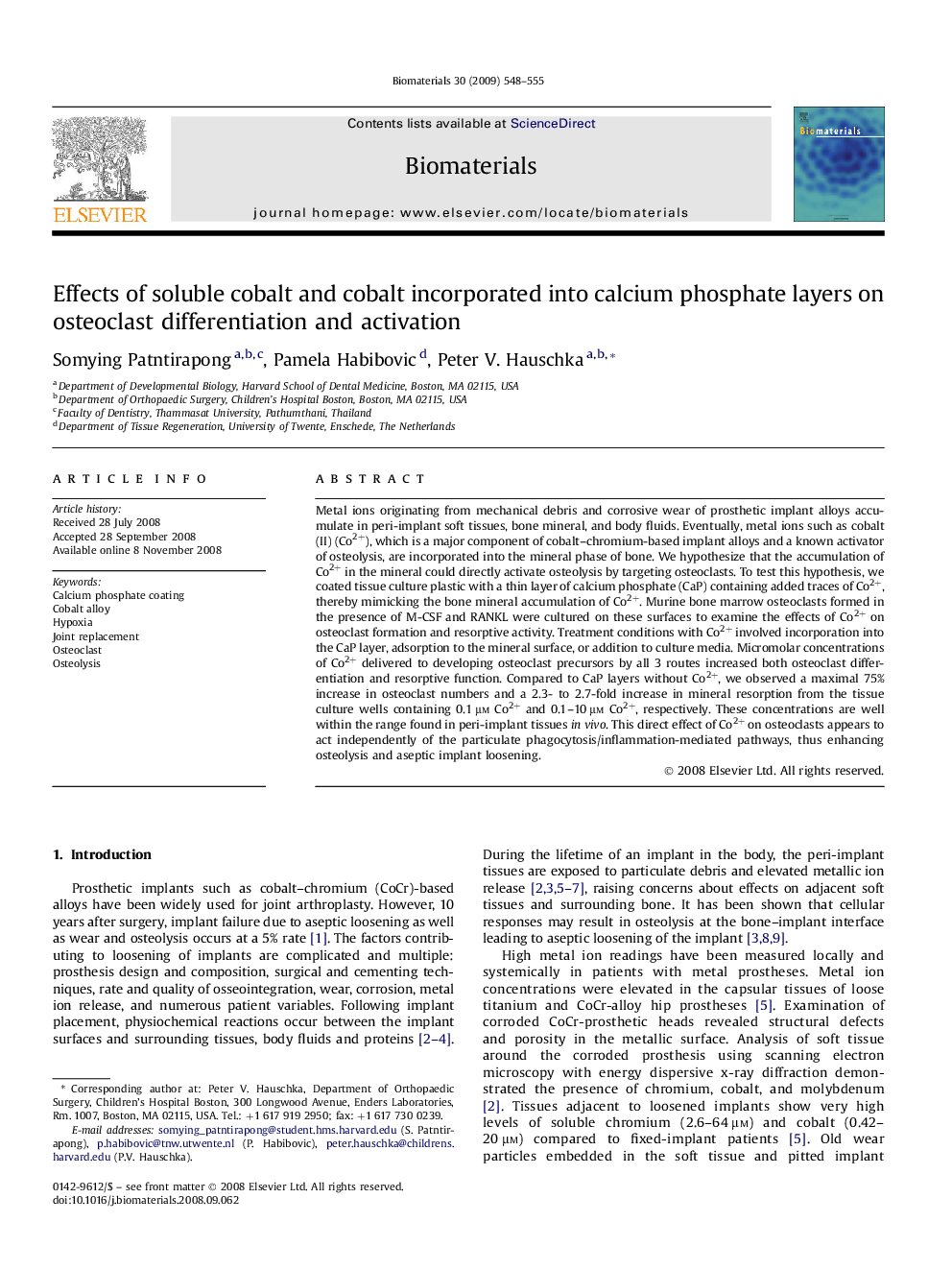| Article ID | Journal | Published Year | Pages | File Type |
|---|---|---|---|---|
| 10828 | Biomaterials | 2009 | 8 Pages |
Metal ions originating from mechanical debris and corrosive wear of prosthetic implant alloys accumulate in peri-implant soft tissues, bone mineral, and body fluids. Eventually, metal ions such as cobalt (II) (Co2+), which is a major component of cobalt–chromium-based implant alloys and a known activator of osteolysis, are incorporated into the mineral phase of bone. We hypothesize that the accumulation of Co2+ in the mineral could directly activate osteolysis by targeting osteoclasts. To test this hypothesis, we coated tissue culture plastic with a thin layer of calcium phosphate (CaP) containing added traces of Co2+, thereby mimicking the bone mineral accumulation of Co2+. Murine bone marrow osteoclasts formed in the presence of M-CSF and RANKL were cultured on these surfaces to examine the effects of Co2+ on osteoclast formation and resorptive activity. Treatment conditions with Co2+ involved incorporation into the CaP layer, adsorption to the mineral surface, or addition to culture media. Micromolar concentrations of Co2+ delivered to developing osteoclast precursors by all 3 routes increased both osteoclast differentiation and resorptive function. Compared to CaP layers without Co2+, we observed a maximal 75% increase in osteoclast numbers and a 2.3- to 2.7-fold increase in mineral resorption from the tissue culture wells containing 0.1 μm Co2+ and 0.1–10 μm Co2+, respectively. These concentrations are well within the range found in peri-implant tissues in vivo. This direct effect of Co2+ on osteoclasts appears to act independently of the particulate phagocytosis/inflammation-mediated pathways, thus enhancing osteolysis and aseptic implant loosening.
